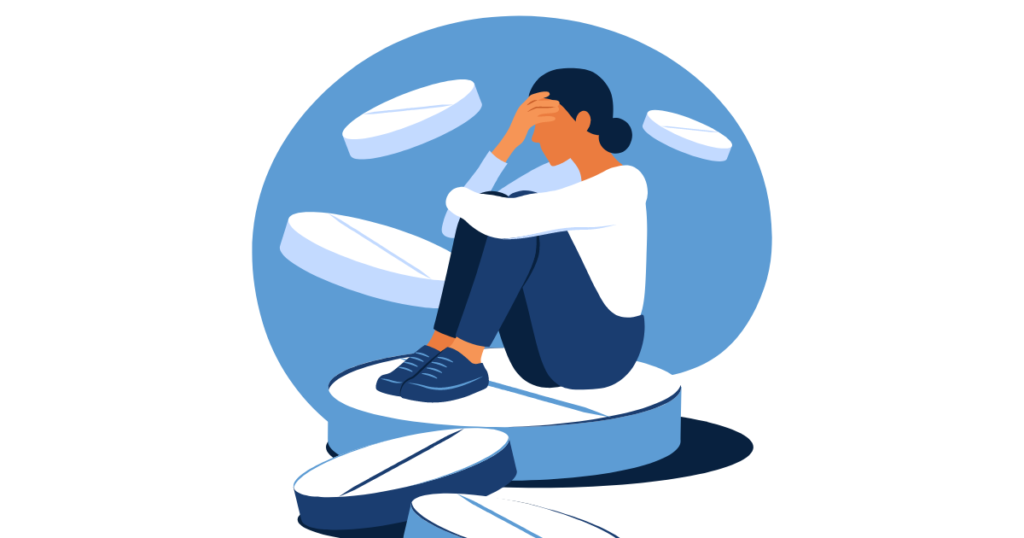A substance use disorder (SUD) is defined as a problematic pattern of using alcohol or drugs that leads to significant functional and clinical impairment, such as health problems, disability, and failure to meet major responsibilities at work, school, or home.
People with SUDs tend to continue using drugs or alcohol compulsively despite the negative consequences involved. And while the condition is often viewed as a moral failing, fundamentally, it is a mental illness caused by a variety of factors, including genetic predisposition, emotional stress, environmental stress, or other pre-existing mental health disorders.
Signs and Symptoms of Substance Use Disorder
Some common symptoms of substance use disorder include:
- Spending a lot of time using the substance or recovering from its effects
- Continued use despite social or relationship problems caused by its effects
- Giving up important activities or neglecting your responsibilities to pursue substance use
- Using larger amounts or for a longer period than intended
- Unsuccessful attempts to cut down or quit using alcohol or drugs
- Experiencing withdrawal symptoms when use is stopped or reduced
How SUDs Affect the Brain
Substance use disorder can severely impact brain structure and function, leading to impaired judgment, decision-making, and self-control. Here are some ways substance use can affect the brain:
Brain Chemistry
When we use drugs, our brain releases a neurotransmitter called dopamine, which helps us experience the feeling of pleasure. The higher the amounts of dopamine produced, the stronger the sensations of pleasure become.
With continued drug or alcohol use, the brain adapts to the presence of high levels of dopamine and becomes less responsive to its effects. As this tolerance builds, people need to take larger and larger doses of drugs or alcohol to get the same pleasurable effect, and any attempt to quit leads to debilitating withdrawal effects.
At the same time, the brain starts to associate substance use with pleasure and reward. This leads to irresistible cravings and an increased risk of addiction.
Brain Structure and Functioning
One of the main areas of the brain affected by substance use is the prefrontal cortex. This is the part of the brain responsible for executive function, which includes planning, decision-making, and self-control. It is the part of the brain that helps us think before we act.
People with substance use disorder have impaired activity in the prefrontal cortex, which can lead to impulsive behavior and poor decision-making. It can also make it difficult to control cravings and resist the urge to engage in substance use.
Excessive substance use can also impair parts of the brain responsible for emotional control, memory, and stress regulation. This can lead to mood swings, memory problems, anxiety, depression, and feeling emotionally numb or disconnected.
Living With Substance Use Disorder
If you or someone you care about is struggling with substance use, it’s crucial to seek professional help. With treatment, people with SUD can learn to manage their condition and lead healthy and productive lives.
There are many different types of treatment available, and the best approach will vary from person to person. Treatment typically includes a combination of medication, therapy, self-care, and support groups. If you’re not sure where to start, you can talk to your doctor or contact a mental health professional for help.
The Takeaway
Over time, substance abuse alters brain chemistry so dramatically that simply feeling “normal” requires continued substance use; ceasing use leads to severe withdrawal symptoms that make it nearly impossible for someone with a substance use disorder to quit on their own.
Luckily, there are treatment options available that can help people with SUDs overcome their cravings and regain control of their lives. If you or someone you know is struggling with substance abuse, don’t hesitate to reach out for help.
